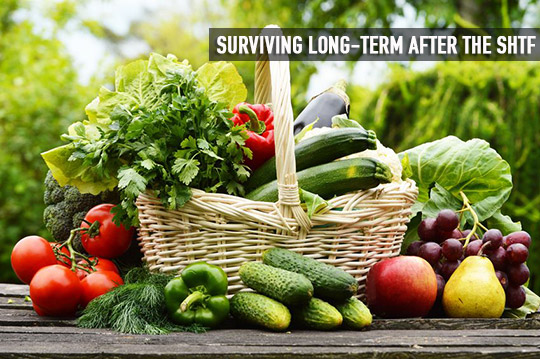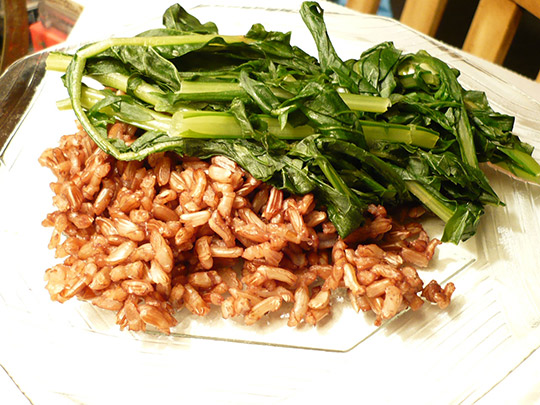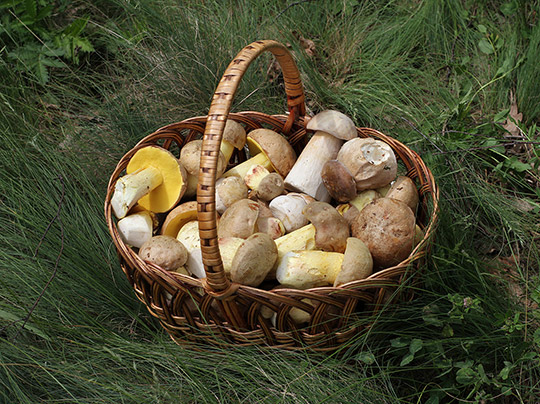
As preppers and survivalists we’ve trained ourselves hard. We’re continually working on acquiring the knowledge and skills that can help us beat the odds and survive a catastrophic event. We prepare for the worst, while planning for long term survival. We know that there may be a few harrowing months, or even years, that will require extra attention, grit, and endurance. However, we also have to consider that in the case of a SHTF event there may be some rebuilding and restructuring that needs to come after. Planning for long-term survival (think years and decades) needs to be a part of our preparations as well.
Food.Shelter.Water. These are the basics, but consider what you’ll do when the provisions run out, everywhere, and there are no more pre-portioned, canned, and packaged convenient survival foods for us to eat? What then?
There are a few options in this case and it’s important to plan ahead and prepare to work towards them if the need arises.
Foraging and gleaning
Foraging is a process of scouting your local area for foods you can eat. It usually involves heading into wild areas to see what’s edible, ripe, and available for collection. Gleaning is another technique that involves going into fields or orchards after they’ve been harvested to collect the leftovers.
Both are viable techniques to gather food, but in the case of gleaning after a SHTF event, and for some types of foods, will only be good for a single season. Foraging, however, is a skill that will be essential to long-term survival as natural ecosystems are self-seeding and symbiotic, providing sustenance season after season and year after year.
Foraging for local wild foods requires an advanced understanding of your local ecosystem – and you need to see yourself as part of it, not apart from it if you want to survive long-term in this way. This means leaving food for the other animals, and allowing the plants to self-seed as well. Harvesting from the local plants, trees, and animals will be essential to long-term survival. It also has the added benefit of actually being healthier for you as well – since most wild uncultivated plants are more nutrient dense as made apparent by their comparatively bitter taste – and have not been over-bred to enhance sweetness.
Foraging is not without its dangers though. To the untrained eye, and even with field guides (which you should invest in), there can be look-alike plants and fungi that you think are safe, consume, and get poisoned by – but they are easily avoided with some training by experts.
If you’re currently unfamiliar with your area, or the area you plan to bug out to, make sure you get in touch with local foragers and wilderness guides who can teach you what they know about the local flora and fauna. You will be surprised how much your perspective and perception changes once you start looking at the wild plants around you as sources of sustenance and survival. Once you have your new knowledge, be sure to actively forage in all seasons. Practice the techniques you will eventually use to survive, and teach them to others as well.
Grow your own
If you are planning to stay in your bug out area long term (and not planning to become nomadic) you will need to be capable of growing your own food from season to season, and storing out of season foods as well. This means having the facilities, tools, skills, seeds, cultivatable land, and access to water that is required to grow your own crops to harvest.
Consider investing in an heirloom seed saving kit, or (if you haven’t already) start your own garden now. Consult with more experienced gardeners and farmers and learn how to seed save yourself and start swapping varieties with others. It’s vital to have the seeds of life ready for planting, because without them you certainly will not be able to materialize any real food at all.
Branch out and experiment
Start now with experimental cooking and recipes to expand not only your skill-set, but your taste buds so that natural foods won’t be a complete shock to your system when SHTF. Even if you theoretically know how to cook over an open fire, do so more frequently so that you can hone your skills.

Mix up new dishes using unusual greens (like dandelion), local pine nuts, fruits, and berries. If you don’t yet hunt certain types of small game animals for food (because you don’t have to) be sure to brush up on your skills and practice trapping and catching smaller animals. Purchase or build the tools and traps, and practice the techniques you’ll need to harvest them. Once you start catching them, cook them up and get your family used to the flavor. In a SHTF situation the last thing you want is a bunch of picky eaters.
Experiment by cooking with not only fresh and seasonal wild fruits, nuts, berries, and greens, but fungi as well. Take an introduction to fungi class – you’d be surprised how many are actually edible and it can get you through in wet weather. Fungi hunting (and eating) is not without its dangers as well so make sure your skill-set is in top form, and never eat a fungi you are uncertain about.

If you train with experienced foragers and fungi hunters and volunteer with local gardening groups you’ll gain the essential skills you’ve need to survive long-term. If you dedicate time to learning these things you will be light-years ahead of others and well on your way to enduring survival should the SHTF.
Also, change your mindset from merely surviving, to healing, and becoming healthier and stronger in the process of rebuilding your life and home. Learn all you can about the nutrients you’ll need to survive, and then gain the knowledge and skills to make those nutrient containing foods easily and readily available to you and your family.
In a truly horrific SHTF situation paradigms are going to change and it’s important to possess the skills you’ll need to not only survive, but thrive in that kind of situation. Be prepared.
The following article was contributed by James Smith, an avid prepper with a passion for self-protection at all levels